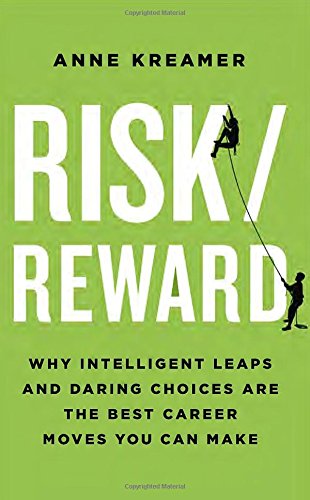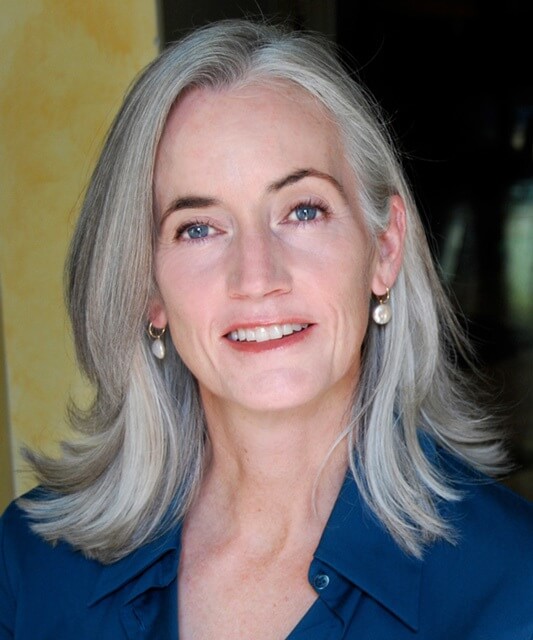Anne Kreamer: Your best career move is take more risks
Job security is a thing of the past. Old industries are dead, and new industries are being born every day. Read more Anne Kreamer on risk-taking.
Table of Contents
- Embroker’s interview with Anne Kreamer
- Your appetite for risk is the real differentiator if you’re able to succeed in our ever fluid workplace.
- Why did you decide to take on this subject of embracing risk in the workplace?
- That’s really interesting that your children inspired your book. Several of your book reviews mentioned giving your book to their 20-something children. Do you think there’s anything parents or educators should do surrounding taking risks?
- Since your book came out, have you seen changes in the workplace or people embracing risk? The gig economy and the side hustle are now such huge buzzwords.
- Did you learn what employees want most from their jobs?
- In your risk-taking matrix, the pioneers are a very interesting group. What really sets this group apart?
- In your book, you ask many successful people one question about risk, which is fascinating to read. So, we need to ask you. What’s the most significant risk you’ve taken professionally?
Protect your business today!
Get a Quote55 million Americans or 35% of the workforce now identify as freelance and that number is rapidly growing. Job security is a thing of the past. Old industries are dead, and new industries are being born every day. So not taking risks is the riskiest move of all.
We spoke to Spy Magazine co-founder Anne Kreamer, who wrote Risk/Reward: Why Intelligent Leaps and Daring Choices Are the Best Career Moves You Can Make. Working with the J. Walter Thompson advertising agency, she surveyed 3,000 people about work. Her conclusion:
Embroker’s interview with Anne Kreamer
Your appetite for risk is the real differentiator if you’re able to succeed in our ever fluid workplace.
We’re no longer staying at one job for decades. “By the time you’re 38, you may have 20 jobs,” says Kreamer, and 50% of us want to leave their current position. But, many don’t know how. The only way to develop your resiliency muscles is through taking smart risks. To help workers navigate the new modern workspace, Kreamer put together a Risk/Reward matrix of four personality profiles based on their penchant for risk.

Pioneers are the real risk takers and the smallest part of population at 17%. And they were aptly rewarded by making the most money compared to the other groups. According to Kreamer, they tried new things and approached decisions very differently from the other groups.
Thinkers are 40% of population and see themselves as having one dominant thing they’re good at. These are often the professional classes: lawyers, doctors, and others who develop expertise over time. They are the ones that you know will get the job done, but they may be taken advantage of because of their reliability. Additionally, they suffer the most from burnout and lose the ability to see opportunities because they’re too busy getting the job done.
Defenders are the most risk adverse and also a significant part of the population. They want a 100% secure job, rather than risking the upside of joining a startup or some new industry. This group is the most vulnerable to complacency.
There are two types of Drifters. Unintentional, which includes many of the workers from the manufacturing industry; and a new group of intentional drifters, who are driven by personal growth and satisfaction. These often identify as craftsman, and they are actually close cousins to pioneers.

Why did you decide to take on this subject of embracing risk in the workplace?
Originally, I came into this subject because I have now almost a 30-year-old and a 27-year-old daughter. My elder daughter was at an incredibly large company in a ‘permanent’ position until she exceeded the amount of time on the company’s payroll before she had to be put on staff. They let her go, and she then worked at two different startups. Both of which were extremely well funded, but went out of business.
And my younger daughter worked for a smaller firm. But what became clear to me after interacting with their peers and their own experiences was that the nature of work in the 21st century is one of perpetual and constant change, and that I believe one of the single greatest things facing people in their work is how can they embrace risk and use it to their advantage.
That’s really interesting that your children inspired your book. Several of your book reviews mentioned giving your book to their 20-something children. Do you think there’s anything parents or educators should do surrounding taking risks?
Education is woefully underserving people for the 21st century. Everything from small things like how do you even contemplate getting your Affordable Care Act insurance to substantially important things, like creating the habit of setting up a Roth IRA or establishing a savings program.

I also think that’s another thing facing our country as a whole. In 30 years from now we’re going to drop off a cliff because there hasn’t been any sort of enforced muscle in terms of saving programs for the current generation of millennials.
In my generation, you worked in companies where you had 401Ks with matching dollars coming in. It was this automatic thing that happened in the workforce. That is no longer the case in the gig economy. The fact that nearly 40 million people are self-employed, it’s a really huge phenomenon. I think that is another area where the education system is lagging profoundly behind what’s going on in reality. Then there’s what’s written about ad nauseam, the helicoptering of parents, never letting kids fail, not learning resiliency, to rote memorization, learning for testing so you don’t learn critical thinking… And the list goes on. Our education system is failing our population.
Learn how Embroker empowers businesses to take the right kinds of risks to help them thrive.
Since your book came out, have you seen changes in the workplace or people embracing risk? The gig economy and the side hustle are now such huge buzzwords.
I don’t see any change. My husband and I developed a philosophy decades ago, which was to always to have three legs on your stool, as it were. So, if any one thing you were involved with went belly up, or you got fired, or whatever the situation might be, you weren’t completely sideswiped by the experience. You had something to fall back on.
The whole sense of the side hustle is essential. Anyone who thinks that this job they have now is in any way, shape or form secure, and that they don’t need to have a parallel exploration going on simultaneously, is frankly a fool.
Did you learn what employees want most from their jobs?
In my research, the two things that mattered most to employees are that they feel valued for their contribution in their work, and that they feel like they are learning and growing. If you can create an environment that does both of those things then you will have greater employee retention. So, it’s important for organizations to figure out how to do that.
In your risk-taking matrix, the pioneers are a very interesting group. What really sets this group apart?
The three things the most successful people did differently from anybody else, besides making more money, was that they had the highest risk taking. They placed a lot of chips on the table. What is really critical is that they answered the question: I make decisions based on analysis and on my gut, equally.
90% of Americans assume that the answer in the workplace is to try to make everything analytical and data driven. And this is what I learned in my last book. [It’s Always Personal: Navigating Emotion in the New Workplace] What’s beneficial in your work environment is when you toggle back and forth between inductive and deductive reasoning, in terms of the broad view and the narrow view. You learn to instinctively understand when you should get into something and when you should get out of something.
It’s that use of emotion, and Daniel Kahneman talks about it a ton in Thinking Fast and Slow. That is a thing that people need to value more, and not devalue, which is that instinctual sense of how you marry analysis and gut to inform the correct decision making.
And the last thing they did more than everyone else, and this was a real driver for their success, was they answered the question, ‘Sometimes, I do nothing at all,’ in the highest percentage.
There’s no question in my mind, you cannot have any interesting output unless you’ve actually nurtured your own creative well and had input. You can’t do it if you’re constantly working in the same kind of silo. That’s why Steve Jobs and Charles Darwin and everybody talk about how genius is not so much about genius.
It’s about connecting disparate things in an original new way, and you have to have digressions, side jaunts in different things that take you slightly off your linear path. They all contribute to your energy.

In your book, you ask many successful people one question about risk, which is fascinating to read. So, we need to ask you. What’s the most significant risk you’ve taken professionally?
Unquestionably when my husband [New York Times best-selling author Kurt Anderson and host of NPR’s Studio 360] and I started Spy magazine together. I was at CBS at the time. We put all our eggs in one basket, so it was both financially and personally terrifying. It could have ended in catastrophe on every level.
It worked really well for us. I ran the business side and he was on the editorial side. I had two kids while we were there as well. There was no maternity leave policy. I took three weeks off for both the kids. The idea of running your own company with your husband, and we were a stand-alone magazine when there were no stand-alone magazines in the country.
So, we didn’t have any of the economies of newsstand sales getting bundled with newsstand distributors or ad buys. And we didn’t do editorials that allowed fashion or beauty advertisement, which made it a lot harder.
There were a lot of risks with that one, huge. But it was a fabulous experience. All’s well that ends well.
If you’re interested in learning how Embroker can help you mitigate risk, create your Embroker account today.

